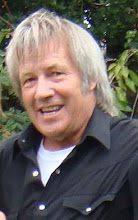Summer has at last arrived at
Trimley and the temperatures have increased dramatically over the last 2 weeks.
Although, it has been fairly quiet we have seen some excellent birds on the
reserve.
Monday 14th
May. A Wood Sandpiper was seen by Ernie and photographed by Will Brame
(This super photo can be seen on BINS). The Wood Sandpiper is a fantastic
little wading bird with superb summer plumage, it could still be seen as of May
30th and its exquisite
markings can be seen by binoculars but more effectively with a telescope.
Other arrivals to the summer flood hide were 2 male Ruff in summer plumage. Up to 3
Hobbies were also noted during this
week of observations.
Hundreds of Swifts
are still flying over the reserve and we are making the most of their flying
displays before they make their return journeys back to the African continent
in July.
There have been plenty of young arrivals over the last two
weeks at a time when temperatures have increased. The
Swan by the visitors centre hide has at last seen her 4 cygnets hatch. I watched her on the 25th May when
there appeared to be some movement in her nest, by Monday 28th 4 cygnets
were at last in the water. There are also 2 Coot chicks in the same vicinity. Many of the Greylag broods
are now off the reserve and somewhere in the safety of the estuary.
Eggs are appearing for other
species: The
Kestrel has 5 lovely eggs and the Barn owl has 5 eggs
and we were very privileged to observe one tiny newly hatched Barn Owl chick
during the week. Pochard also has a nest on the reserve. The Oystercatcher on the Shingle beach has
produced a clutch of 3 eggs, which is in a very vulnerable location.
Sunday 27th May we were very
pleased to see a control Reed Warbler from San Sebastian, which appeared in our nets.
This could have been a bird originating from Trimley and it enables us
to understand more about the complex migration routes of these lovely reed
birds.
Other observations during the last 2 weeks include Little
Egret, Bar-tailed and Black-tailed Godwit, Greenshank
and our first Cuckoo. Whitethroat
and Lesser whitethroat can also be seen and heard.
Grass Snake, Small white Butterflies and Orange Tips and the Common Blue
Damselfly are now quite common.
I would like to thank all those
contributing to the Trimley records, especially, Dave, Ernie, Big John and
Mark.




No comments:
Post a Comment